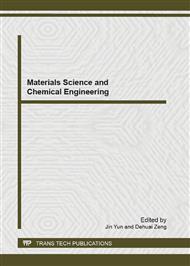p.672
p.678
p.682
p.689
p.693
p.698
p.703
p.708
p.712
Phytochemical Screening, Antioxidant Activity and Total Phenolic Content of Spirogyra spp.
Abstract:
A freshwater macroalga, Spirogyra spp., were analyzed for its phytochemical composition, antioxidant activity and total phenolic content (Folin−Ciocalteu method). Phytochemical analysis of Spirogyra neglecta revealed presence of phenolics, tannins, glycosides and saponins. The crude extraction of Spirogyra spp. was carried out using two solvents via, methanol (methanolic extract) and water (aqueous extract). The total phenolic contents of crude extracts were shown at 346.58±1.61 and 589.77±1.65 mg gallic acid equivalents/g extract in aqueous and methanolic extracts, respectively. The antioxidant capacity of aqueous and methanolic extract was estimated by two different methods; ABTS assay, and DPPH assay. The antioxidant activity of two extracts is affected by the extracting solvent and different assay. In the DPPH scavenging assay and ABTS assay, both extracts showed high antioxidant activity. In addition, the high correlation between results of all antioxidant activities and total phenolic content was found. The rapid TLC assay in methanolic extract is considered as the rapid test to evaluate the antioxidant activity of natural compounds. The compounds showing four bands at Rf = 0.25, 0.35, 0.42, 0.64. This study showed that Spirogyra spp. might constitute an important source of natural antioxidants.
Info:
Periodical:
Pages:
693-697
Citation:
Online since:
May 2013
Price:
Сopyright:
© 2013 Trans Tech Publications Ltd. All Rights Reserved
Share:
Citation:


